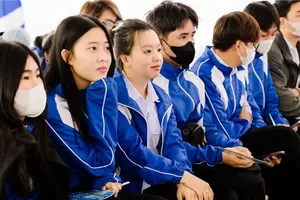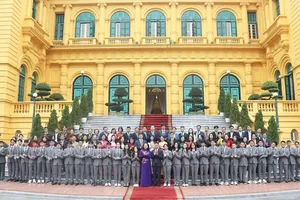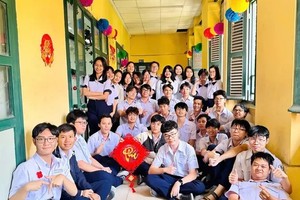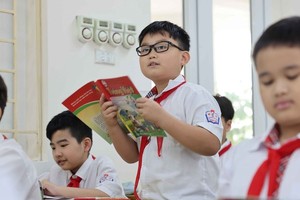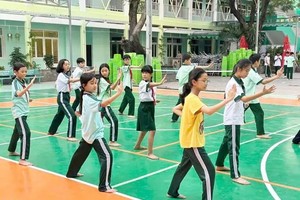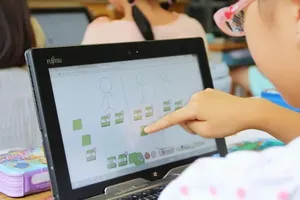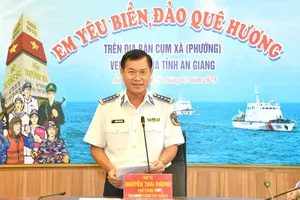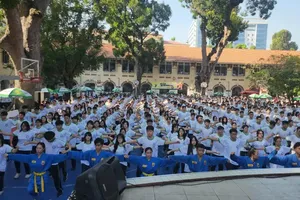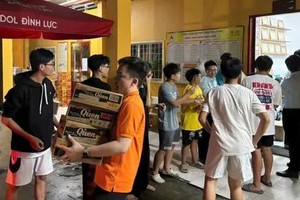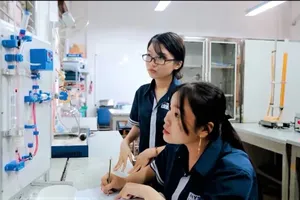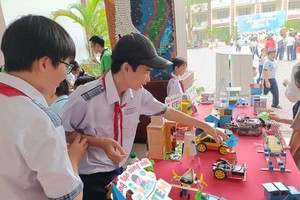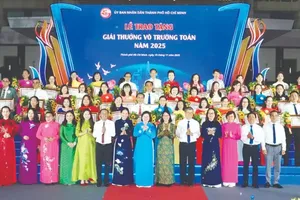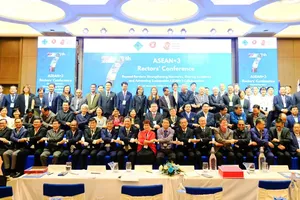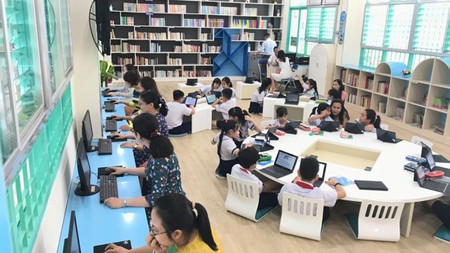
A visit to the library of Dong Da Primary School (located in Tan Binh District) in the morning session showed a very impressive sight full of laughter. It seemed that students of a class were discussing the content of a history book they chose to read to expand their knowledge after the history lesson that day.
Dang Ngoc Bao Thy, a fifth grader in the school, shared that she regularly spends 1-2 hours a week reading digital books in the library. To her, compared to the traditional paper version, the new type can offer more colorful and updated information. In addition, with the new facilities, looking for information now is much quicker.
Principal of Dong Da Primary School Nguyen Thi Dung stated that the smart library model in her school belongs to the project ‘Building a Modern Style School’. The total cost for this model is nearly VND1 billion (approx. US$43,000), mostly spent on 30 tablets, 6 desktop computers, 3 interactive TVs to serve the learning and researching needs of both pupils and teachers here.
In comparison with the conventional information search, using the digital version is much quicker while results are more useful. Besides, the open digital learning material database with over 500 e-books, including textbooks and reference ones as well as skill learning books and novels, allows many library users to access one book at the same time instead of waiting for their turn like in the past.
A similar library model was established in Luong Dinh Cua Secondary School, sited in District 2.
Pham Gia Bao, a ninth grader, shared that formerly, studying natural subjects like math, chemistry or physics was quite theoretical and boring, with a repetition of learning by heart formula after formula. Things have changed now that the open learning material database is installed in the library. With lots of pictures, illustrations, and videos, it is much easier for students to look up information from different sources.
Principal of the school Vu Thi Minh Hieu said that the school arranges one 45-minute session per week for each class of the sixth and seventh grade to visit the library and get used to the new functions. Students of the eighth and ninth grade will come to the library in their extra curriculum lesson. She added that reference materials for all 14 current subjects have been well prepared to serve library users.
The smart library model is being built in many schools around the city like Nguyen Chi Thanh Secondary School in District 12, Tran Dai Nghia High School for the Gifted in District 1.
According to Deputy Director of the HCMC Department of Education and Training Le Hoai Nam, the city has had an investment plan to build this library model in 17 high schools via the city’s investment stimulus program, where these schools can loan a maximum of VND100 billion ($4.32 million) with a lower interest rate in no more than 7 years.
Over the last few years, the municipal budget has allocated around VND3,400 billion per year ($147 million) to construct new classrooms and more than VND200 billion ($8.6 million) to renovate existing schools or buy new educational materials.
Sadly, these sums of money can only ensure sufficient infrastructure to serve the increasing number of students in HCMC. Therefore, asking for the financial help from the community is one effective and logical way to improve the current educational facilities in schools at the moment so that learners are able to get in touch with modern technologies in the studying process.
One successful example of this sound solution is Tran Dai Nghia High School for the Gifted. This is the first school in HCMC to call for the aid from parents and make good use of the city’s budget in order to build its smart library.
By introducing the model of ‘classroom inside a library’ (students learn directly with their teacher in the library) and ‘library inside a classroom’ (Wi-Fi is provided in the campus for students to access the library’s digital materials), the school has proved the efficiency of the new library model to both parents and teachers. Furthermore, the Learning Management System has been installed to allow the teaching staff to prepare online lessons and contribute the to lesson plan database more conveniently.
Seeing the success of the school, the city has prepared a plan to copy this model to other schools, in hope of better serve the needs of learners and teachers in this information era.
